Between the bullying I faced at school and a slew of family problems at home, my teenaged self found an escape in portal fantasies. At 16, I was shy, precocious, and full of fear—I’d never had a boyfriend, but I was deeply disturbed by the male attention I received on the early social media sites. Stories of girls disappearing down rabbit holes or being whisked into a fantastical underworld—populated by strange creatures and even stranger men—toppling law and order, and then triumphantly returning to real life, became favorite templates onto which I could project my fantasies and trauma.
My favorite comfort films at that time were Jim Henson’s Labyrinth (1986), a dark fantasy film featuring muppets and David Bowie as the Goblin King, and Tim Burton’s Alice in Wonderland (2010), a CGI-drenched adaptation rather loosely based on Lewis Carroll’s books, with Johnny Depp in the whimsical role of the Mad Hatter. Throughout high school, I probably rewatched those movies more times than was strictly healthy. I also read and wrote countless fanfics based on the films’ characters and fantastical lore, exploring alternate endings and relationships. But I’m 24 now, perhaps more mature but still traumatized, and the isolation brought about by the Covid-19 lockdown gave me a chance to revisit them and consider why they made such an impact on me.
Labyrinth centers on its young protagonist Sarah stranded in a maze, solving a series of logic puzzles and optical illusions, in a race against time to save her baby brother from being turned into a goblin, all the while resisting her attraction to the alluring Goblin King. Meanwhile Alice, like a typical fantasy hero, must rescue her friends, get her hands on some magical artifacts, and slay a fabulous beast to free “Underland” (which was once Wonderland) from the clutches of the autocratic Red Queen and her evil Knave. Both movies feature similar and straightforward quest-driven plots and, obliquely or otherwise, depict a young woman’s sexual awakening within a larger coming-of-age narrative about adulthood and responsibility. The films also present different versions of masculinity, with Jareth (the Goblin King) as a beguiling but ultimately toxic, controlling figure and the Mad Hatter serving as a more emotionally open, empathetic friend and ally in his relationship with the protagonist. The two opposing portrayals of male behavior also opened up for me two different ways of thinking about trauma.
Although billed as a children’s film, the heightened sexual tension between Jareth and Sarah in Labyrinth is very apparent. The toys, magazine clippings, and accessories scattered in Sarah’s bedroom suggest that the labyrinth is a figment of her imagination and that the Goblin King is based upon her absent mother’s glamorous boyfriend (glimpsed in photos and newspaper clippings taped to Sarah’s mirror; this backstory is fleshed out further in the official novelization of the movie). If that wasn’t creepy enough, Jennifer Connelly was 16 when she played the role of Sarah, while David Bowie was almost 40 when he strutted about in his leather pants opposite her as the immortal fey overlord. At one point, Sarah is distracted from her quest by a hallucinatory masquerade ball—Jareth pulls her into a romantic dance as strangers look on, amidst a background littered with phallic masks and objects.
Yet the film’s concluding message is one of empowerment and freedom. To escape the labyrinth, Sarah must not only solve it but also break the Goblin King’s thrall over her. She must turn down the lavish gifts and untold wonders he has offered as well as decline the chance to be his immortal subservient queen, finally uttering those crucial words: “You have no power over me.” To escape the terrors of the imagination, which are often informed by real fears and anxieties, Sarah must break his heart utterly and reject his control, recognizing toxicity and abuse for what it is. It reminds the viewer that mental and emotional manipulation—Jareth’s attempts to isolate, control, threaten and cajole Sarah throughout the film, the conditioning that leads up to his ultimate demand: “Just fear me, love me, do as I say and I will be your slave…”—are just as dangerous, damaging, and difficult to escape as more obvious, physical threats. Indeed, in the precarious world of the labyrinth (with its oubliettes and foul swamps), the various moments of physical danger and emotional distress Sarah endures feed upon one another in an interlocking loop of patriarchal dominance and control, mirroring in fantasy the very real, lived experiences of so many women.
The Mad Hatter from Underland, by comparison, is far more benign. He tells Alice just how much she has changed since her last visit as a child (“You’ve lost your muchness”), but also reminds her of her core values and beliefs. Their alliance is founded upon friendship and mutual regard for the other’s welfare. While the Hatter risks his life to aid Alice, she too prioritizes rescuing him. Like Jareth, he also begs her to stay and is unsettled at the idea that he has no independent existence outside her imagination, but he doesn’t make any malicious threats or false promises. Their eventual farewell is sad and poignant, but strangely peaceful—it offers closure, but with a possibility of return. While the earlier drafts of the screenplay featured a romantic angle between the two characters, the film and its sequel eschew such notions. (The subtext might hint at a deeper bond, but that’s what fanfics are for…)
Buy the Book
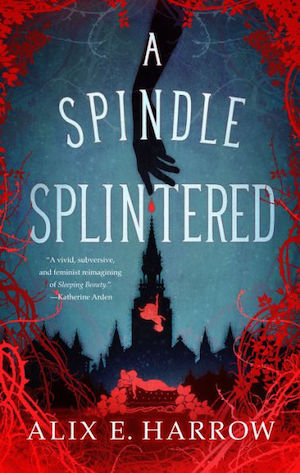

A Spindle Splintered
In a way, the two films taught me what to look out for and which red flags to avoid in dealings with men, otherworldly or otherwise: the importance of boundaries, of getting your voice heard, the dangers of obsessive love, and knowing when to let go. Apart from being figments of a maturing girl’s imagination, both the Goblin King and the Mad Hatter are older androgynous men, inhabiting the margins of a wondrous world, surrounded by non-human creatures. The Goblin King rules over the goblins, but he isn’t one of them, while the Hatter enjoys his tea party with mice and rabbits. Sarah and Alice thus, represent companionship and desirability in a way the other creatures cannot even compare, yet the two male characters go about their pursuits very differently. In both cases, the woman finally chooses her own life and her own world over them, but while Alice is promised that she can return to Wonderland if she so desires, Sarah’s fictional “underground” crumbles away when she refuses Jareth (although she is still able to call upon the friends and allies who helped her through the labyrinth after she returns to the real world).
Sarah’s trauma seems to run deeper than Alice’s, overall. Feeling neglected and unappreciated by her family (and possibly feeling abandoned by her mother), she constructs an elaborate daydream where she play-acts as a princess, romanticizing aspects of real life that are still unknown to her. Consequently, she falls under the spell of a beautiful and dangerous man that she finally manages to escape only by asserting her agency. By turning her back on toxic attraction and taking responsibility for herself and her choices, she reclaims her own power and selfhood—and possibly adjusts her expectations of the real world in the process. In the final scene, she is reunited with her fictional friends and they celebrate while Jareth in his owl form looks in through the window, banished from her company—thereby suggesting she has a much healthier relationship with her imagination, now. Yet, while Sarah’s inner conflicts take the form of an opponent that must ultimately be faced down and vanquished on her own, Alice comes to terms with her insecurities with the help of imaginary friends who are trustworthy and have her best interests at heart. By setting boundaries and prioritizing herself, Alice saves herself while the Red Queen who swore her heart to the treacherous Knave is finally betrayed and banished.
The fantastical landscapes that we often retreat to when reality gets too tough are influenced by changes in our immediate environment, our mental and emotional responses to the real world. Alice stumbles upon Underland to escape an unwanted marriage proposal, while Sarah’s own actions (thoughtlessly wishing her baby brother away to the goblins) lead her to the Underground. Clearly, both women are entering adulthood and struggling with the emotions and fears over loss of identity and control that transition entails. In both stories, the imaginary worlds of the labyrinth and Underland aren’t simply a harmless staging ground on which to rehearse real-world encounters. Instead, they are psychological battlegrounds, informed by patriarchal conditioning and fraught with very real dangers: self-doubt, hopelessness, distrust or fear of one’s own desires and abilities. Stories like this model, in fantastical terms, the process of a young woman finding herself, gaining the confidence necessary to differentiate between helpful and harmful relationships and choose the life she wants to live.
Watching these films, viewers (and particularly young, female viewers) are able to experience and empathize with this journey—we see how the protagonists’ disappointments, vulnerabilities, and romantic notions can be exploited or confused, particularly in the case of Sarah and the predatory Goblin King. We’re also heartened by the friends and allies who support and believe in them, helping them (or sometimes needing help) along the way. But more importantly, we see Sarah and Alice realizing and embracing their own power and agency without losing their imagination or sense of wonder. They persist and persevere, imperfect but comfortable with themselves, reminding us that it’s possible to be strong but still need an escape from time to time…and that it’s possible to be grown-up and still believe six impossible things before breakfast.
Archita Mittra is a writer, editor, and artist, with a fondness for dark and fantastical things. She completed her B.A. (2018) and M.A. (2020) in English Literature from Jadavpur University and a Diploma in Multimedia and Animation from St. Xavier’s College (2016). Her work has been published in numerous publications, including Strange Horizons, Hexagon Magazine, Mithila Review, Thought Catalog, and ScreenRant, among others. When she isn’t writing speculative fiction or drawing fanart, she may be found playing indie games, making jewelry out of recycled materials, baking cakes, or deciding which new Tarot deck to buy. She lives in Kolkata, India, with her family and rabbits. Archita can be found on Twitter and Instagram, or at her website.


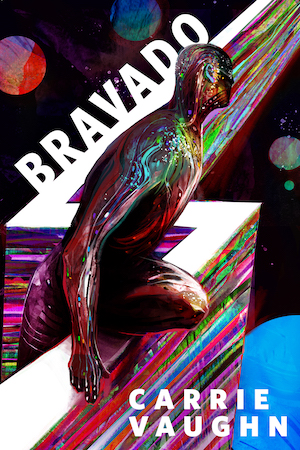
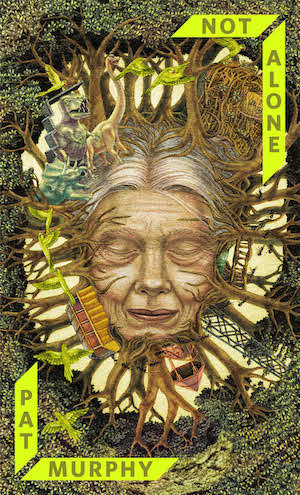
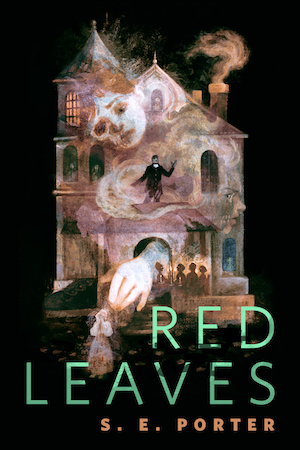
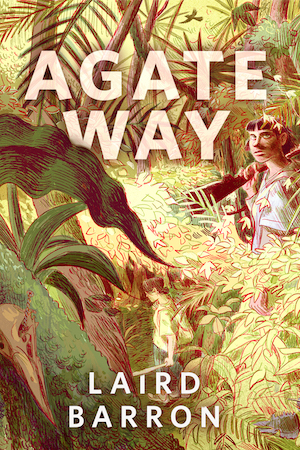




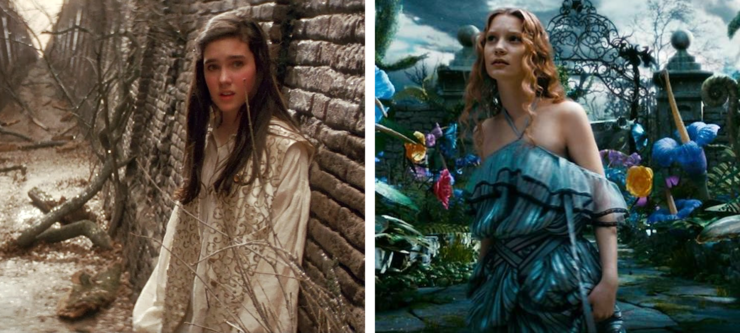
Well said/written, Archita!
I’m a longtime Labyrinth fan, such that the music factored into my wedding and the fact that we had a masquerade-themed reception (and many years later, a baby shower for my wife straight-up Labyrinth-based).
Since then, I’ve been surprised to see how big a deal that film is made by women. I mean, of course it is! But I wasn’t aware of that, because I was a boy when I first saw this movie and really grew to love it more after college. I loved the magic and the faeries and puppets and music and even Jareth, for his part. But not, of course, in the same way. I was accustomed to meeting other people who barely knew about the movie, much less adored it. So it’s been curious, my own kind of awakening, reading in the years since of what so many girls got out of it.
How you say that the film’s “concluding message is one of empowerment and freedom” is excellent. That’s so rare and refreshing to hear. The fact that Jareth’s influence on her is toxic and abusive, in the big picture, escapes many. So many. And don’t get me wrong, I love his character and Bowie nailed it. But they’re not supposed to end up together, as all the fan art and fan fiction seems to miss. She rejects him (good on her, she is not his priority), saves her brother (the responsible thing to do), and yet retains all her friends for the rest of her life (the owl is shut out the window), in effect keeping all the non-toxic parts of her experience, so they’ll be with her in her imagination from then on.
Brava!
Thank you so much for writing this.
Gosh but I do love the ball sequence! I love her gown and her jewels and I especially love that Sarah shatters the spell and escapes. The ball itself is a wonderful depiction of the traditional fairy narrative where the fair folk are at once alluring and threatening.
An excellent article!
I wrote a graduate paper comparing both Alice and Dorothy (from the Oz series), but then I compared their stories to both Chihiro from Spirited Away and Ofelia from Pan’s Labyrinth. Sarah from Labyrinth never crossed my mind as being part of this list of female fantasy adventurers.
Well done! Now I want to start doing the “you remind me of the babe” riff.
Excellent essay!
As JLaSala @1 says, it is disturbing how many fans want Sarah to end up with Jareth. This feels like an indication of how many people’s minds are shaped by patriarchal story lines and imagery in such a way that they find the toxic lure of Jareth positively attractive. The New York Times just ran an opinion piece by Annalee Newitz in which she writes about the power of fan culture to influence the choices of the writers/creators of television series, movies, etc. Reading JLaSala’s comment, I was reminded of Newitz’s discussion of the Vampire Diaries fan group who lobbied strongly for Elena to choose the sociopathic Damon over the honorable Stefan. No matter how many of Elena’s friends and family members he murdered. I do understand the thrill of the “bad boy”–and certainly, the attractive qualities of Bowie’s Jareth–but I am unnerved by the number of women who push for the (non-evil) female character to be romantically linked with an untrustworthy man who overpowers her. Not a new phenomenon, of course; think of all the female viewers who were happy that Eliza went back to Higgins at the end of My Fair Lady! While the feminist George Bernard Shaw turned over in his grave. As JLaSala and Mittra say, the ending of Labyrinth is both empowering and reassuring; Sarah has asserted her own power and gotten free of the seductive glamour of the king without having to give up the positive, supportive friends of her imaginative world.
Labyrinth as a whole is open to multiple interpretations, and Jareth is no exception. However, I think you need to start with who (or what) Jareth is in relation to Sarah.
I usually don’t like it when stories go with the it-was-just-a-dream interpretation and I also think Labyrinth shouldn’t be seen that way. However, as far as Jareth goes, it can be useful to start with the assumption that he is something drawn out from Sarah’s own mind. She’s a young, teenage girl, just awakening to feelings of sexual desire and attraction but who is not comfortable with them yet. Jareth represents something she’s attracted to but also threatened by. She wants what he represents but also fears what that may cost in terms of things like autonomy, other relationships, and things that she may not be able to clearly define yet.
Although Sarah seems to idolize her mother (and clearly takes after her in appearance and in her interests in acting and imaginative fiction), there’s some suggestion that her mother left her father for another man, a man who resembles the Goblin King. So, Sarah herself is a child who has been abandoned by a mother who chose her dreams and a romantic relationship over her daughter, a choice Jareth offers Sarah, her dreams in return for the child in her care.
But, Sarah isn’t being offered a good alternative towards adulthood by her stepmother. Their relationship is strained, and it’s clear the stepmother doesn’t know how to relate to Sarah. A lot of that seems to be on Sarah, who has plenty of hostility towards the woman who has taken her mother’s place. But, the stepmother doesn’t know how to deal with a young introvert with an artistic temperament. She seems to understand that something’s wrong, but the best she can do is question why Sarah isn’t dating. She’s not asking why Sarah is withdrawn, if she has friends, how her relationships with them are, or any of a dozen things.
I tend to be kinder to the stepmom than some fans I’ve read and I’m more inclined to put this down to her being a very different person from Sarah and just not getting her rather than thinking a boyfriend would fix all of Sarah’s problems. She sees what is, to her, the most obvious sign of something wrong and focuses on it because seeing the problems surrounding it would require understanding her stepdaughter in a way she hasn’t managed yet. But, the end result is not helpful and is putting pressure on Sarah to deal with things she’s not comfortable with.
OK, so Jareth would fit nicely into a paper of Freudian issues and Jungian archetypes. But, who is he?
And, here, we’re up against ambiguity again.
The Goblin King may simply be an entity who embodies Sarah’s fears.
Or, he may represent what Sarah’s confused feelings could lead her to, an abusive relationship with someone who would prey on her emotional vulnerabilities.
It’s also possible Jareth should be seen as representing forces that are threatening until Sarah recognizes her own agency and power. This raises the question (which a lot of fanfics have tried to answer) of what he is once this has happened. If he is something created from Sarah’s mind, does her understanding change him as well?
Another interpretation is that Jareth is forced into the role Sarah has chosen for him but that he doesn’t want to be trapped and defined by it any more than it’s right for Sarah to be trapped by her own fears.
Long story short, I’ve seen fanfics run the gamut, with Jareth interpreted in dozens of different ways, and I think all of these stories can be made to fit with what we were shown in the movie.
Sarah’s self-recognition and acceptance of bother personal power and responsibility is great. I don’t want to diminish that. But, what Jareth truly is and how I should view him remains deliberately unclear.
The original script for Labyrinth, written by the meritorious Terry Jones (but which was heavily revised in the final film), could also cast some light on this subject. Granted, so much of it was altered and discarded, but if you read through it it’s actually cool to see how much was retained to the point where the overall structure and some of the goblin encounters were all Terry.
In any case, in that script Jareth first visits Sarah’s house in the real world “disguised” as the playwright Robin Zakar (though it’s called Meander’s Queen at this point, not The Labyrinth) but soon reveals his true identity as Jareth and forcibly takes her brother (named Freddie) from her. When she tries to grab him back, she’s transported to just outside the labyrinth and Jareth doesn’t even give Sarah their bargain to reach the castle in 13 hours until a little while later.
The ballroom scene is only a tiny bit different, with more emphasis on Sarah having her dreams fulfilled; it’s clearer that Jareth’s trying to divert her. Calls her his Queen. “Then he begins a song. A song that tells Sarah he will give her everything she wants, even things she doesn’t know she wants. A song that says forget it all; all the restrictions, al the powerlessness. Forget and stay in the dream.” There’s more emphasis on decadence and the masked nobles around her are lewd and suggestive. Eventually she just straight-up runs and hits the wall of the bubble and it all crumbles into the junkyard.
In the final confrontation, Jareth outright says he wants her as his queen (and not so interested in having a new goblin prince). Here she is firmer in her rejection, says she doesn’t want him, and doesn’t really seem to waver at all. It’s less poetic (and in this part the final film version is way better). She actually punches him, and when she gets her baby brother in her arms even kicks him and says she wouldn’t want him “if you were the last . . . goblin on earth!” At which point he actually shrivels down to become a sniveling little goblin who throws a temper tantrum.
Obviously, there’s much about the final version that is superior, but there are so many great little details in Terry Jones’s initial work. That said, even in this nascent Labyrinth, it feels like the goblin kingdom and the labyrinth itself are more or less “real” and yet have shaped themselves around Sarah’s imagination and desires. Jareth’s rock star humanlike form and all the glamor comes from her. He is merely clothed in that illusion. But her rejection is firmer, and it’s clearer this was a fantasy of her own detailing, but maybe not wholly of her own creation.
Having said all that, there’s WAY more with the worm. It’s adorable. “How about a biscuit? The misses just took a fresh batch out of the oven.”
Not much to add, but –has anyone else noticed how much Poppy Drayton is a dead ringer for young Jennifer Connelly?